The beginning of your speech is important, but it’s not the MOST important.
Sure, one could make an argument that it is. Since its main purpose is to win the audience's attention in hopes that they’ll listen to whatever else you’ve got to say, I can see how the beginning could be considered the top dog.
In the realm of what’s actually most important, such as the PURPOSE of your presentation, today I’m going to argue that the closing is the most important part.
Here’s why:
The end of the presentation is the starting pistol for action.
Most of us know what a “call to action” is, and if not, you better learn quick. However, for purpose of today’s post, the call to action doesn’t need to be some specific physical action such as BUY MY BOOK! (which you should actually go and do right now...I’ll wait).
Actually, you know what, we’re going to ignore the actual call to action portion of a speech entirely. Rather, this post concerns itself with how one goes about flipping on an audience member’s internal light switch, which would ultimately drive them to undertake the desired action.
The reason is that there are times where you may just wish to leave the audience with wonder, or motivation, or some other feeling.
How do you drive people to internal action (hopefully an impetus to outward action) without necessarily giving them a specific call to action?
The answer is in electrifying the emotions of the audience.
So, how can this be achieved?
Here are 4 ways:
1. Story
The story is great for just about anything. In public speaking the story is like Spackle used for filling in holes. If there’s a hole in your speech, rub a story into the crevice and voila.

Spackle (story) to the rescue!
For closing down your speech it can do wonders. Perhaps you started with a story, why not end with the resolution of that initial story? For the purpose of stirring emotion, it’s best if it ends with change.
I almost put “positive change” but then I realized that it’s not necessary for stirring action.
The traditional flow of a story is that conflict is quickly introduced, the conflict eventually gets dealt with and then the resolution is some form of positive change.
But, you can just as well use a story where your character or situation begins in a positive light, but then ends with that being taken away because of [Enter Obstacle That You Want Audience To Counteract With Their Subsequent Action].
Stories work.
2. Something Amazing or Thought Provoking
This next one should literally leave the audience in shock or awe. And why not throw in some curiosity while we’re at it?
This is done well in magic shows. Usually the magician will end with their greatest trick and leave the audience wondering how the heck it was done.
Don't worry, there are others ways to use this technique since it’s unlikely you are as awesome as this guy:
A tip would be to think of special talents you possess. Say you’re a master visual effects artist that works on special effects for Hollywood blockbusters and you have the ability to create awesome videos, find a way to implement that as your wow factor.
It can really be anything just as long as it relates to your presentation. The only requirement is that it’s bad ass.
3. The Enemy
Now we’re getting serious.
The “enemy” is one of the strongest motivators ever to exist.
It conjures up fear, it brings up the desire to “prove” the enemy wrong, and it comes with a hint of the “underdog.”
When a government wants its citizens to join a war, the weapon of choice is fear—the fear of the enemy coming to get you...and your little dog too!!!
Fear is a tricky tactic. Effective for sure, but tricky. There’s the argument of morality. Is it moral to instill fear into people in order to get them to do your desired action? It’s a question worth considering.
Is the call to action something that will help the audience? There’s a good starting point when evaluating it on your morality chart.
Anyway, that’s your business. I’m just going to give you tips on how to use it.
Who is the enemy of what you want your audience to achieve as a result of listening to your speech?
The more tangible the better, but that doesn’t mean you can’t use ideas such as procrastination, or using future outcomes such as “poverty” as an enemy.
“Are you going to let naysayers decide your future?” The enemy are the naysayers, right?
“Are you going to allow excuses to stop you from reaching your goals?” Excuses are the enemy.
There are a lot of variations that you can come up with. Brainstorming is the key. Get a piece of paper and write the action down that you want your audience to take, and then write down every imaginable enemy that stands in the way.
4. Passion and Volume
This last one is more of a delivery technique which you could use in combination with the above three options.
Passion and volume. Get into it! Get loud!
When I think of this technique, I think of epic speeches. Here are some of my favorites:
And this...
(Nice example of this and the enemy factor!)
Basically, it’s a way to sum up your message and get people fired up! Ending distinctly and with passion. Hit ‘em hard.
We aren’t all capable of sounding like Mel Gibson or Gerard Butler, I understand that. Yet, you can use your passion to make up for it. We all have the passion in us and it comes from believing in whatever we decide to speak about.
Conclusion...
There comes a time during your speech where you'll need to boil the water. You want it to get so hot that the audience can do nothing else but your intended action.
And there's no better time to do this than near the end of your speech. There's a reason why a fireworks show ends with the grand finale, and it's not just to get rid of extra explosives.
Go and do likewise and see how you could use these 4 methods in your next speech's grand finale.
Hopefully this post has fired you up to share it!
About this guy...

Howdy! My name is Matt Kramer and I used to suffer excruciating death when speaking in front of a group, now I LOVE it. Overcoming this fear has changed my life and it can change yours, too. My focus is to help you overcome the fear of public speaking so you can build the confidence to go after what you want in life.

